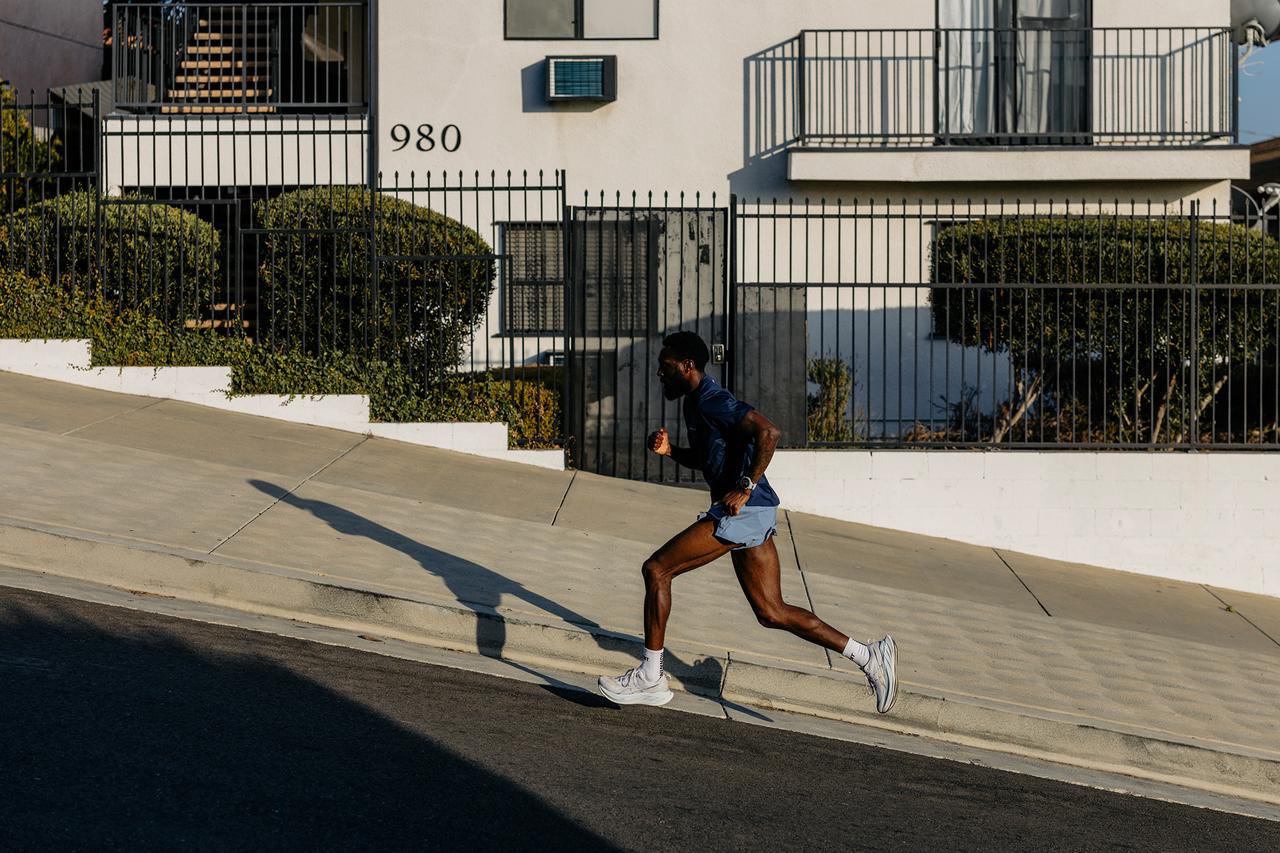Structured workouts are one of the most powerful tools in any athlete's training toolkit. Whether you're preparing for a goal race or fine-tuning a specific skill, structured sessions help you train with purpose. In this guide, we'll show you how to build and customize these workouts using the COROS app and the Training Hub.
What is a Structured Workout?
A structured workout is a pre-planned session with defined intervals, targets, and recovery periods. Instead of running or riding by feel, you're guided through a series of steps designed to target specific intensity zones. These zones can be based on heart rate, pace, power, cadence, or Effort Pace.
COROS offers a handy workout-builder tool to design your workouts for running, cycling, swimming, climbing, or strength.
Find it in the COROS App
- Open the COROS app and tap the "Profile" icon.
- Select "Workout Library" from the menu and tap "+"
Find it in the Training Hub (Desktop)
- Go to training.coros.com and log into your account.
- Click on the "Calendar" tab.
- Open the Workout Library on the righthand side and select "Create Workouts"
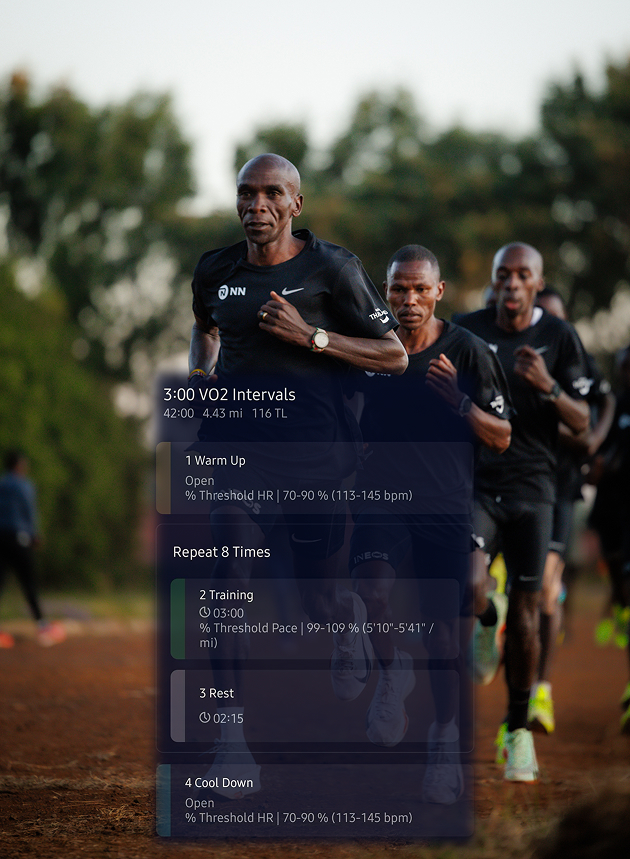
Once you have the workout builder open, you can start outlining the details.
- Warm-Up and Cool-Down: We understand athletes can start off a little stiff, or be exhausted during a cool down. This shouldn't affect your fitness stats, so warm ups and cool downs aren't considered when calculating Efficiency and Running Fitness.
- Training & Rest Sections: These define the work and recovery. Each is be set by:
- Duration: You can run for time, distance, or until you've reached a certain Training Load. For rest, you can also choose to wait until your HR returns to a specific value.
- Intensity: Select the intensity type (heart rate, pace, etc), then select the zone or value you would like to target.
COROS Tip: Intensity can be relative (e.g., Zone 3) or absolute (e.g., 7:00/mile pace). Relative intensity adapts to your fitness, while absolute targets are the same for all athletes.
The builder supports all major activities, but note that Strength and Climbing workouts behave differently. These rely more on weight and climbing grades, respectively.
Once built, workouts can be saved to your personal library or used in building a training plan. A training plan is simply a sequence of these workouts scheduled in order. Both workouts and training plans can be shared using a link. When you download from a shared link, you add a copy of that plan or workout to your library, so you can edit your copy to meet your needs. On Training Hub, coaches can also assign plans and workouts directly to their athlete's calendar.
Predicted Metrics
When planned into your calendar, structured workouts provide an estimate of both Base Fitness and Intensity Trend. Simply put, you can see where you’d be on any given day, assuming you complete those workouts flawlessly. This becomes a handy feature to plan your training and ensure you will not over-reach or under-train.
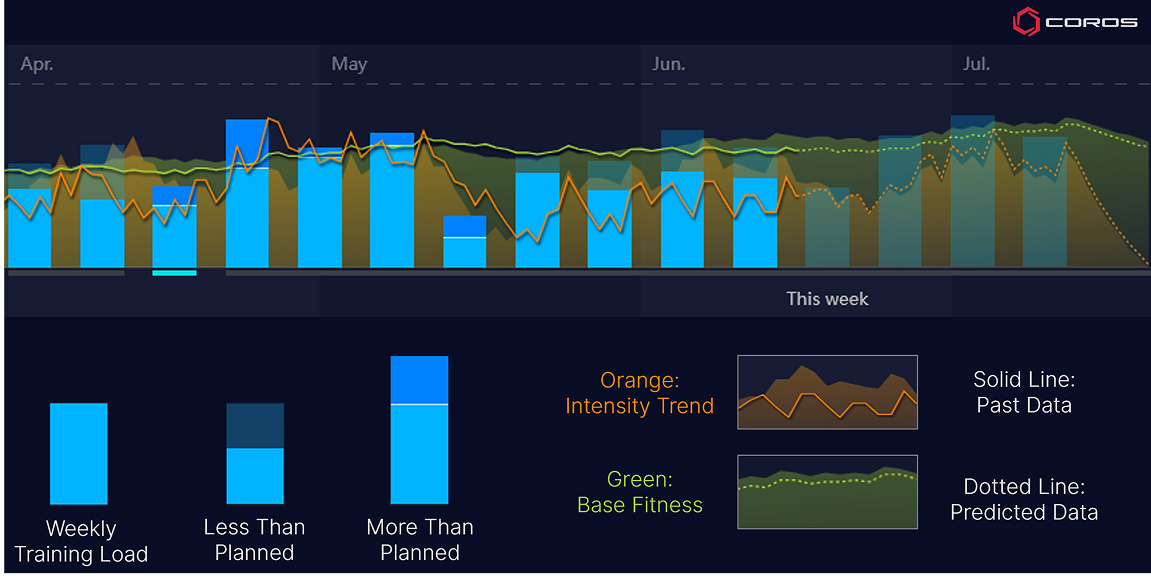
COROS Tip: Adding ALL activities to the calendar (even your easy runs) gives EvoLab the data it needs to predict your future Base Fitness and Intensity Trend accurately.
Completing Workouts with Your Watch
Once a workout is on the calendar, it syncs to your COROS watch. You can view up to two weeks of scheduled workouts on the calendar widget. At the start of the session, the watch will prompt you to begin today's scheduled workout. (If you have multiple workouts scheduled for that day, you will be asked to choose which one to start.)
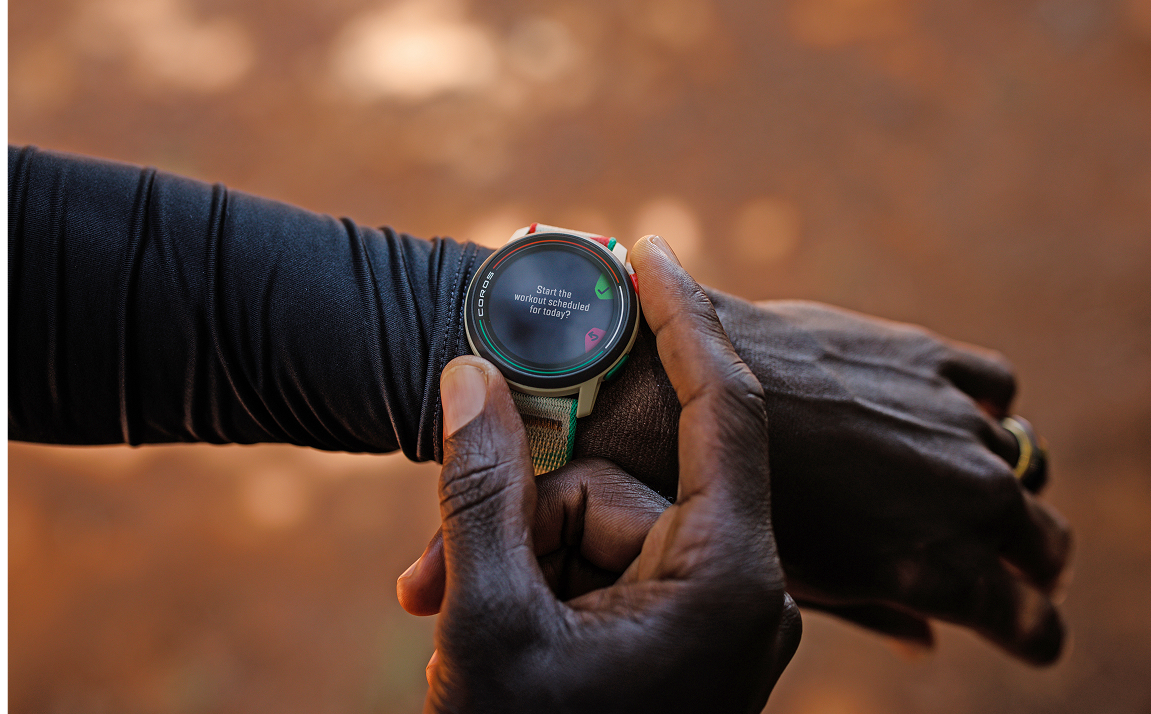
During the workout, you'll notice a few additional features compared to the standard activity mode:
- Target Monitoring: Your watch alerts you if you drift outside the prescribed intensity. These live cues help keep you in the right zone.
- Section Navigation: If at any point you need to skip forward or back in your workout, you can do so on the pause screen by selecting "View Workout".
- Auto Start/Manual Start: With Auto Start enabled, sections advance immediately once the planned duration is up. If disabled, your watch will still alert you as you approach the end of your planned section, but advancing to the next stage of the workout will require a button press (this is particularly helpful for track workouts).
COROS Tip: When you finish the last stage of the workout, your watch will pause the activity if Auto Start is enabled. If you decide to extend your cool down, be sure to double-check that your watch is running! Consider adding an "Open" Cool Down stage at the very end if you often continue after the structured workout is complete.
Analyzing Workouts with Effort Accuracy
After you complete a structured workout, COROS calculates Effort Accuracy to show how closely you followed the plan. It’s a combination of:
- Duration Completion Rate: Did you hit the full time or distance?
- Intensity Completion Rate: Did you stay in the intended heart rate, pace, or power zone?
For example, take a 2-mile run at 8:00-9:00/mile. If you ran 2 miles but could only keep yourself within this pace zone for 80% of the time, you will then receive a Completion Rate of 90% (100% for distance and 80% for intensity). Warm-ups and cool-downs are included in this equation.
A few key points:
- Each section of the workout is scored individually.
- Open sections (where no target is set) do not receive a score.
- Your calendar view will show the overall Effort Accuracy score in the top-right corner, helping you quickly scan past sessions.
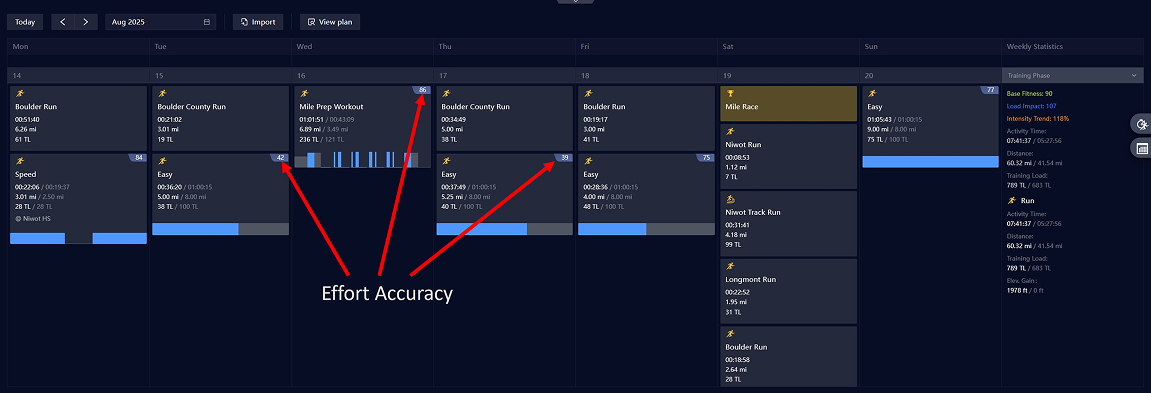
The Calendar View
- Your activity view will show the Effort Accuracy for each section of the workout, helping you see specifically where you can improve.
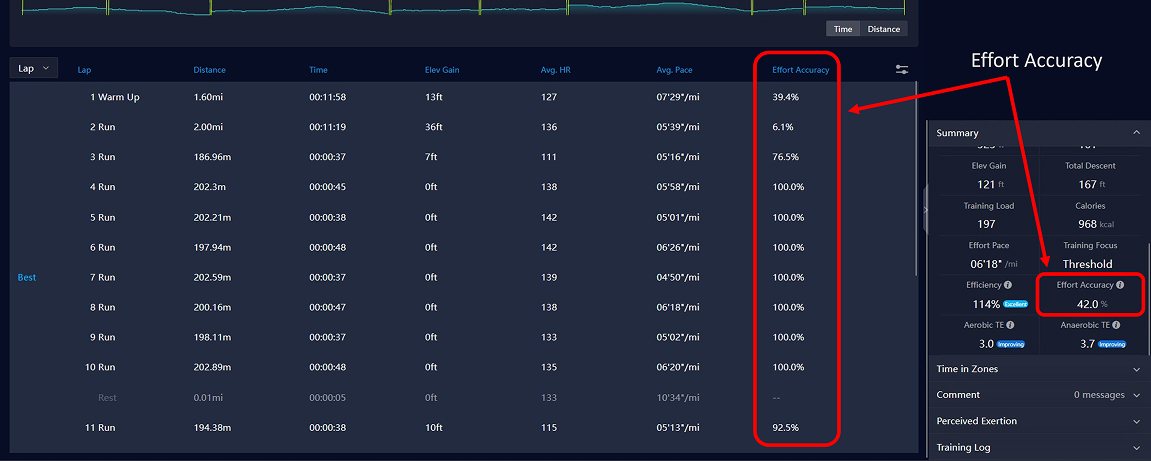
The Activity View
- The activity view also highlights your target zones on the activity graph.
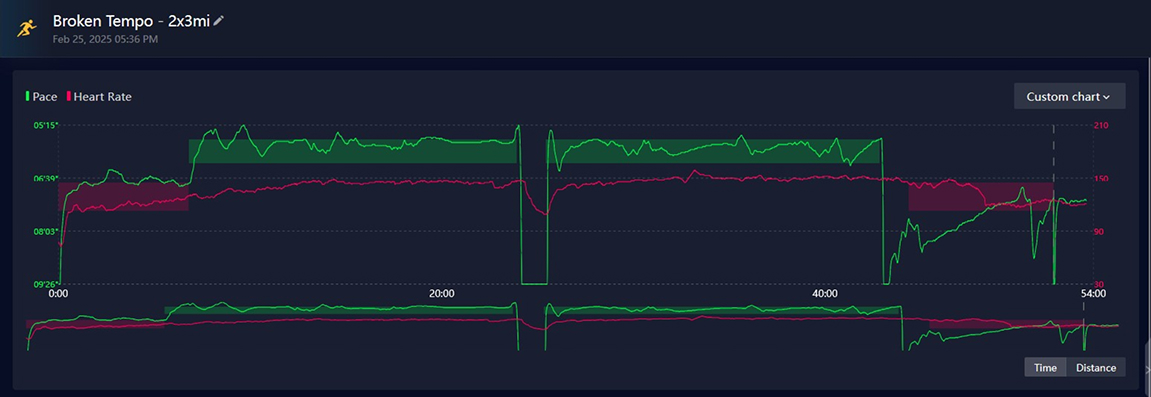
Target Zones Highlighted
From Library to Long-Term Plan
Structured workouts are the most powerful when used consistently. We suggest building a personal library to reuse your favorite sessions, and planning them out in advance to see your predicted metrics. When your data flows from workout creation to completion and analysis, you can make more informed decisions and adapt your plan as needed.
/fit-in/0x18/coros-v2/images/common/logo_black.png)

